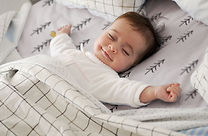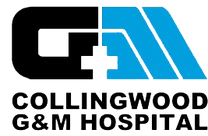
Childbirth
We feel privileged to be part of your childbirth experience, and together with the staff at the Collingwood General and Marine Hospital, we are happy to help guide you through this important time. Our number one priority is the safety of mother and baby, however we also love to give you a lovely birth experience. We hope the following information will help prepare you for this experience. Please feel free to ask us any questions.
Real Labour
Regular, painful, menstrual-like cramps that get stronger, last longer and get closer together. The pain is all over the belly (not just low or in the back).
When to Come to Hospital
Contractions: Every five minutes from the beginning of one to the beginning of the next. If before 36 weeks, bad weather, long distance to hospital or previous fast labour, then every 7-8 minutes.
Leaking fluid (rupture of membranes): Fluid continually leaking out of the vagina and soaking your clothes.
Bleeding: Any blood from the vagina that would require a pad or liner.
What to Bring to Hospital
Need To Have for you:
-
Sanitary Pads - one package of MAXI pads (overnight, heavy flow)
-
Your choice of clothing - pajamas, nightgown, slippers
-
Your choice of pillow (optional)
-
Toiletries of your choice
-
Nipple cream if planning to use (Lansinoh is one brand)
-
Water bottle to contain drinking water/ice chips at bedside
-
Snacks if desired for post delivery
For Support Person:
-
Pillow, blanket, snacks
-
Music of choice for Labour
-
Frozen water bottle (500 ml) for back massage
For Baby:
-
Sleepers and hats
-
Blankets
-
Diapers (1 package Newborn size), baby wipes, your choice of product for baby's bottom (Vaseline, Olive Oil, Coconut Oil)
-
Formula of your choice is choosing to bottle feed
You will receive a basket from the hospital with 3 large pads, two MAXI pads, two diapers, one peri bottle and two pairs of mesh panties.
Birth Plan
Please be open. It is difficult to plan for something with so many variables.
Ambulate: For as long as possible, walk or get into the tub.
Support people: Anyone you want.
Food and drink: Light food and drink in early labour.
Artificial rupture of membranes (breaking the water): Only in labour or if we are trying to get you into labour.
Interventions: Only if necessary will there be syntocinon (Pitocin) augmentation, episiotomy, vacuum or forceps assistance, or Cesarean section. Prior to starting any intervention, a full explanation and discussion will be had.
Pain Relief Options:
1. Trained support people
2. Entinox: Laughing gas to breathe through contractions
3. Nubain and Gravol: Injection (needle) to help relax between and take the edge off contractions
4. Fentanyl PCA: A pain pump controlled by you
5. Epidural
Breast or Bottle Feed

Your choice. Please feel free to ask.
SOGC - Childbirth
Please see the following excellent information from the SOGC regarding childbirth.



